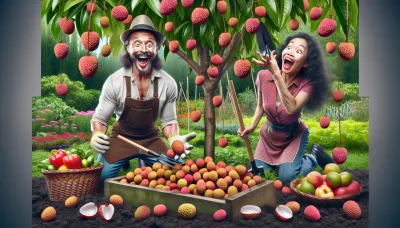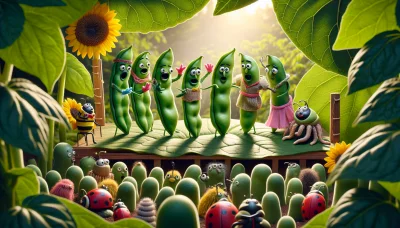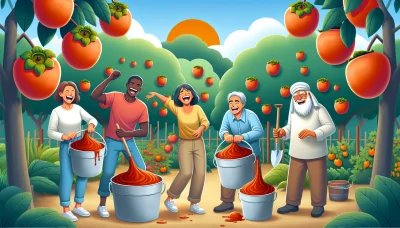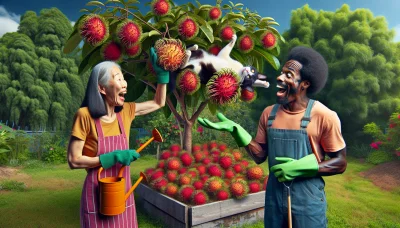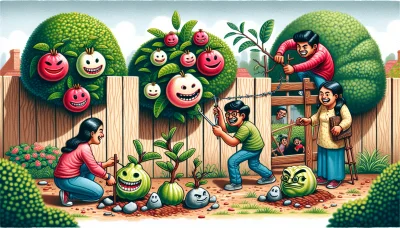Harvesting strawberries Quiz
Test Your Knowledge
Question of
Introduction to Harvesting Strawberries
For garden enthusiasts, mastering the proper techniques for harvesting strawberries is crucial for several reasons. First, it ensures the highest quality and sweetness of the fruit by picking them at the optimal time. Additionally, using the right method minimizes damage to both the berries and the plants, encouraging a more fruitful yield in the following seasons. Understanding the importance of these techniques can transform your gardening experience, making it more enjoyable and productive.
Best Time to Harvest Strawberries
To determine the perfect ripeness and timing for harvesting strawberries, look for berries that are fully red, with no white or green areas at the tip. The best time of day to pick strawberries is in the morning when they are still cool from the night's temperatures. Gently tug at the berry; if it comes off easily, it's ready to be picked. Remember, strawberries do not continue to ripen after being picked, so it's crucial to harvest them at the right stage of ripeness for the sweetest flavor.
Tools and Materials Needed for Strawberry Harvesting
- Gloves
- Strawberry picking basket or container
- Knee pads or a kneeling pad
- Pruning shears or scissors
- Water bottle for hydration
- Wide-brimmed hat or cap for sun protection
- Sunscreen
- Comfortable, durable shoes
- Garden fork (for preparing the soil)
- Organic mulch (to maintain soil moisture and temperature)
Step-by-Step Guide to Harvesting Strawberries
- Wait for the right time to harvest, typically when ¾ of the strawberry surface is red.
- Harvest in the morning, when the berries are still cool, for the best flavor.
- Gently hold the stem just above the berry between your forefinger and thumbnail.
- Twist the stem to snap it without pulling the berry directly.
- Place the harvested strawberries gently into a container to avoid bruising.
- Avoid washing berries until just before you plan to eat them to prevent spoilage.
- Check plants daily during peak ripening season since strawberries ripen quickly.
- Remove any damaged or rotting berries to keep the plant healthy and productive.
Common Mistakes to Avoid in Strawberry Harvesting
Strawberry harvesting can be a rewarding experience, but it's also easy to make mistakes that can affect the quality and quantity of your harvest. One common error is picking strawberries too early. Strawberries will not ripen further once picked, so it's crucial to wait until they are fully red and ripe. Another mistake is not being gentle enough, which can bruise the fruit and make it spoil faster. Always pick strawberries by the stem, rather than pulling on the fruit itself. Overlooking the importance of regular harvesting is another oversight; strawberries should be picked every two to three days to prevent overripening on the plant. Finally, neglecting to check for pests and diseases can lead to a compromised crop. Regularly inspect your strawberry plants for signs of trouble and take action promptly to mitigate any issues. By avoiding these common mistakes, you can ensure a bountiful and delicious strawberry harvest.
Storing and Preserving Your Harvested Strawberries
To ensure your harvested strawberries maintain their freshness for as long as possible, it's crucial to store them properly. The key is to keep them cold and dry. Avoid washing them before storage, as moisture can encourage mold growth. Instead, store your strawberries in a breathable container in the refrigerator and wash them just before use. For best results, consume your strawberries within a week of harvesting.
- Freezing: Wash and hull the strawberries, then freeze them in a single layer on a baking sheet before transferring to a freezer bag. This method is great for smoothies or jams.
- Drying: Dehydrate strawberries in a food dehydrator or oven to make dried strawberries, perfect for snacks or cereal toppings.
- Canning: Preserve strawberries in sugar syrup or make strawberry jam or jelly. This allows you to enjoy your strawberries for months to come.
- Making Fruit Leather: Puree strawberries and dry the mixture in a dehydrator or oven to make strawberry fruit leather.
- Pickling: For something different, try pickling strawberries in a vinegar-based solution. This can add a unique twist to salads and desserts.
Conclusion: Enjoying Your Strawberry Harvest
Harvesting strawberries at home is not only a delightful experience but also a rewarding one. The joy of picking fresh, juicy strawberries straight from your garden is incomparable. Beyond the pleasure of the harvest, these berries bring a wealth of health benefits, including a rich supply of vitamins and antioxidants. We encourage all gardeners, whether novice or experienced, to apply the tips shared in our article. With the right care and approach, your strawberry plants will thrive, offering you a bountiful and delicious harvest. Let the sweetness of home-grown strawberries inspire your gardening journey, making every effort worth the reward.


